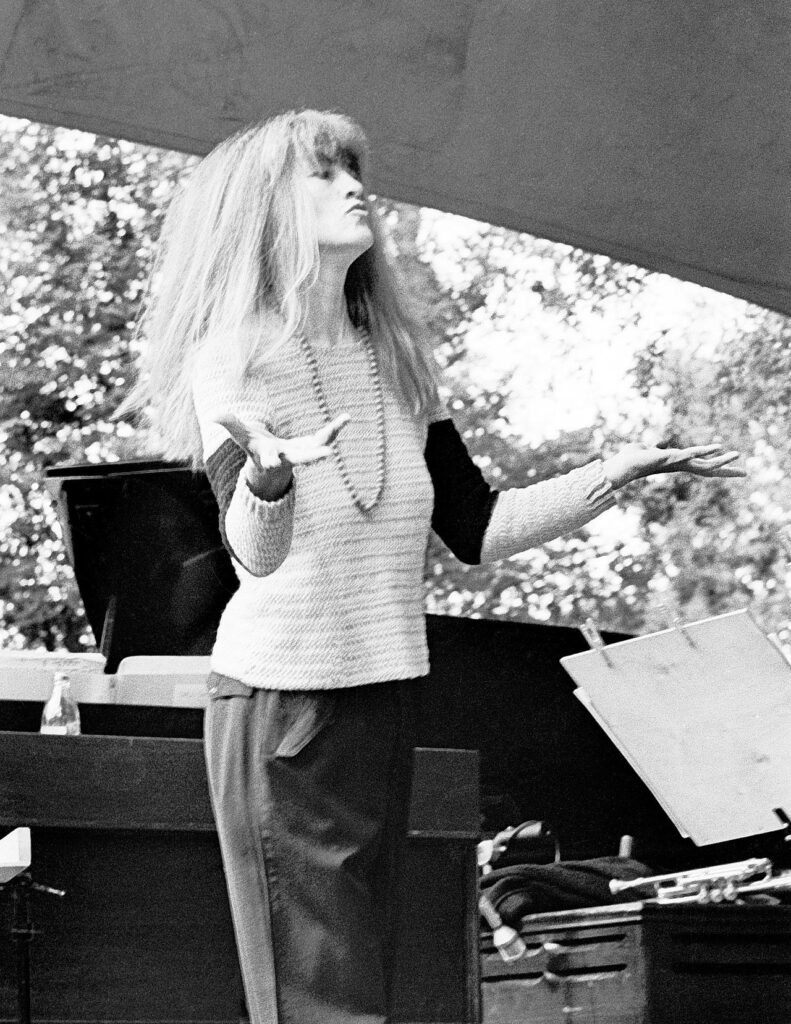Carla Bley, RIP

I have had trouble finishing my Music Notes posts lately. The problem is that they take a lot of time and I am trying to finish a book manuscript here. I am trying though.
But I have to mention the death of the great Carla Bley, a truly unique figure in free jazz history and a huge innovator. There are several good remembrances around, but check out David Graham’s in The Atlantic as an example.
The American composer, keyboardist, and arranger started her career in the 1950s as a teenage cigarette girl, selling smokes to patrons at New York jazz clubs. The job and its title both give a sense of how long ago this was, and how inhospitable the environment might have been for a young, non-singing female musician in what remains a very male milieu. She met and began a relationship with the avant-garde pianist Paul Bley, who encouraged her to put her childhood musical training to work by composing. Later, she was the secret weapon of Charlie Haden’s Liberation Music Orchestra, an ambitious melding of progressive political and musical impulses. She played with Jack Bruce of Cream and Nick Mason of Pink Floyd but never lost any of her jazz cred, or her edge. In 2015, she was named a National Endowment for the Arts Jazz Master, a designation awarded to the greatest jazz musicians, and she led one of the best small jazz bands of the early 21st century.
The root of this versatility was Bley’s voice as a composer. She wrote tunes that shouldn’t really be hummable—they’re just too weird, and the jags and misdirections are too sharp—but that still somehow function as earworms. They’re built of the same stuff as all of the other great jazz standards: solid enough to maintain their integrity, but plastic enough to work in nearly any setting. Consider her song “Vashkar.” The first recording was in 1963, by Paul Bley’s traditional piano-bass-drums trio. In 1969, the Tony Williams Lifetime recorded a version soaked in acid, both lysergic and hydrochloric; a few years later, Jaco Pastorius, Pat Metheny, Paul Bley, and Bruce Ditmas refashioned it into woozy, Grateful Dead–like fusion. And in 2020, the Polish pianist Marcin Wasilewski found new ground to cover as he returned the tune to its acoustic roots.
You can trace the same odyssey for many of Bley’s other pieces. What besides “Ida Lupino” unites Pastorius with the guitarist Mary Halvorson, one of today’s most cutting-edge musicians? (That one of Bley’s best-known songs pays tribute to a prominent female pioneer in the arts is no accident.) Where would the bebop stalwart Art Farmer, the fusion great John McLaughlin, and the progressive vibraphonist Gary Burton find common ground other than “Sing Me Softly of the Blues”? Her work as a keyboardist shows a similar versatility. YouTube features videos of a 1975 British TV performance by a band that includes Bruce, Bley, Mick Taylor (recently departed from the Rolling Stones), and Bruce Gary (not yet the drummer for the Knack—yes, the “My Sharona” band). It was an unconventional grouping, but it worked, with Bley’s harmonic textures and solos pushing the rock-based players out of easy paths.
Master doesn’t even begin to cover Bley.
Let’s listen to some of her work. RIP.
Bley and Bootsy!


